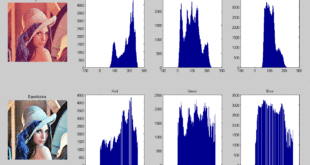Cloud computing is the delivery of different services through the Internet. Companies that provide cloud services enable users to store files and applications on remote servers and then access all the data via the Internet.
Cloud computing is a popular option for people and businesses for a number of reasons including cost savings, increased productivity, speed and efficiency, improved flexibility and scalability, performance, and security. Another attractive point of the cloud is its ability to enable a mobile workforce, which brings enhanced flexibility and efficiency. Every day, millions of users are accessing online cloud services such as Apple iCloud, Gmail and Dropbox across desktop and mobile devices.
Cloud computing has undergone two major development phases. In the cloud-based infrastructure phase, computing power and data are gradually migrated from traditional data centers to the cloud. In the cloud-native phase, advanced cloud-native architectures drive cloud computing towards containerization and serverless computing, says the global research arm of Chinese technology major Alibaba Group
The rapid development of network connection technologies is the key to unlocking the third phase of cloud computing and spawns a new computing system, cloud-network-device convergence, which fundamentally changes the way clouds, networks, and devices collaborate with each other.
In this new system, clouds, networks, and devices have a more clearly defined division of labor. Clouds function as “brains”, which are responsible for computing and data processing. Clouds offer high computing efficiency, systematic data processing, and high-precision, efficient, and accessible AI technologies.
Networks interconnect clouds and devices. After being converged on the cloud, advanced network technologies such as optical fibers, 5G, and satellite Internet help build a ubiquitous, low-latency network.
Cloud Network Convergence
ETSTI multI-Access edge computIng (MEC)
Challenges
Heterogeneity in infrastructure resources and service functions is a main challenge to net-work-cloud/edge convergence.Virtual functions for networking and computing may have quite different features and requirements. For example, VNFs often require shorter latency, larg-er throughput, and higher reliability as compared to typical cloud/edge functions.
End-to-end service provisioning in a converged network-cloud/edge environment typ-ically spans across autonomous admin-domains operated by different service providers. Therefore, how to fully utilize heterogenous virtual resources and functions across tech- and admin-domains for composite service provisioning to meet diverse user requirements becomes a challenging problem
Integration of 5G Network and Edge Computing
The 5G network provides an environ-ment in which edge computing may be widely deployed; therefore, integrating 5G network and edge computing forms a representative scenario of network-cloud/edge convergence. The unprecedented complexity of the 5G network introduces challenges to its integration with edge computing. Such complexity comes from various aspects, for example, the dense and heterogeneous network functions, highly diverse applications, ultra-low latency requirements for vehicle communications, growing demand for location-based services with high positioning accuracy, and so on.
Therefore, deploying edge computing within 5G network becomes an important research area where com-prehensive solutions are to be developed for addressing the challenges of heterogeneity, scal-ability, flexibility, and performance
Cloud-network-device convergence
Devices offer easy-to-use, cost-effective, lightweight interfaces that allow users to interact with the cloud. Various models of devices can collaborate on the cloud to accommodate varied interaction requirements. Cloud-device convergence makes diversified scenarios possible on a single type
of device and ensures consistent experience across multiple types of devices.
Mobile Cloud computing means integration of mobile device, internet, and cloud platform together. Mobile is used at the client end. The cloud service provider offers a mobile application as a tool for cloud computing. The mobile device sends a request and cloud execute.
Cloud-network-device convergence is the catalyst that will drive the emergence of new applications. Clouds allow applications to break free of the limited processing power of devices and fulfill more demanding tasks, such as high-precision industrial simulation. The vast network of connected devices allows for low-latency edge-computing, meeting the requirements of various scenarios such as real-time industrial quality inspection.
Devices leverage and package the advantages afforded by cloud and network into a single interface –which will become an essential tool powering applications such as cloud PC and cloud gaming.
Two pressing challenges are looming ahead of cloud-network-device convergence. One is making breakthroughs in network technologies. Networks play a significant role in cloud-network-device convergence. Network quality, cost, and coverage may become a potential bottleneck of the new
system.
Therefore, new network technologies such as 5G and satellite Internet must be continuously improved and developed to ensure wide coverage and sufficient throughput. The other is information security. Security is always a top concern of enterprises who store and process data on the cloud. Enterprises have high requirements for security technologies, such as data encryption, data governance, secure computing, and privacy-preserving computation.
In the next 2 years, we expect to see a surge of application scenarios on top of the converged cloud-network-device system. This will drive the emergence of new types of devices and
promise more high quality and immersive experience for users, the Alibaba Damo Academy says.
References and Resources also include:
https://alibabadamo.oss-cn-beijing.aliyuncs.com/
 International Defense Security & Technology Your trusted Source for News, Research and Analysis
International Defense Security & Technology Your trusted Source for News, Research and Analysis
